Jonggu Kim
Modeling Inter-Speaker Relationship in XLNet for Contextual Spoken Language Understanding
Oct 28, 2019

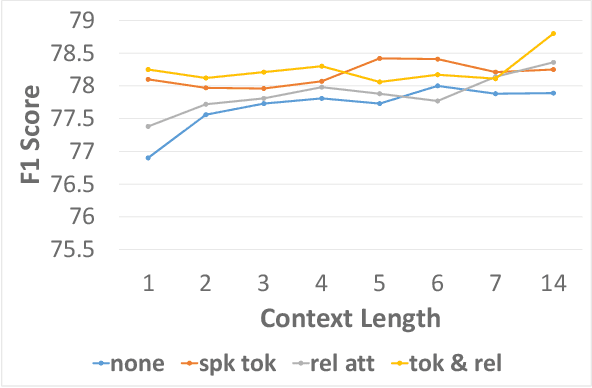
Abstract:We propose two methods to capture relevant history information in a multi-turn dialogue by modeling inter-speaker relationship for spoken language understanding (SLU). Our methods are tailored for and therefore compatible with XLNet, which is a state-of-the-art pretrained model, so we verified our models built on the top of XLNet. In our experiments, all models achieved higher accuracy than state-of-the-art contextual SLU models on two benchmark datasets. Analysis on the results demonstrated that the proposed methods are effective to improve SLU accuracy of XLNet. These methods to identify important dialogue history will be useful to alleviate ambiguity in SLU of the current utterance.
Decay-Function-Free Time-Aware Attention to Context and Speaker Indicator for Spoken Language Understanding
Mar 29, 2019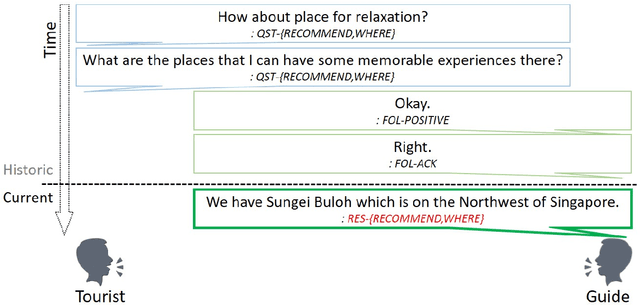
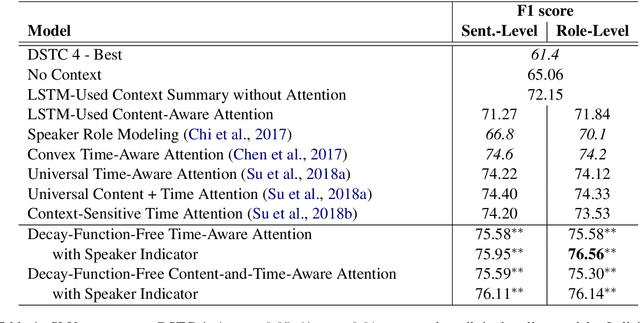
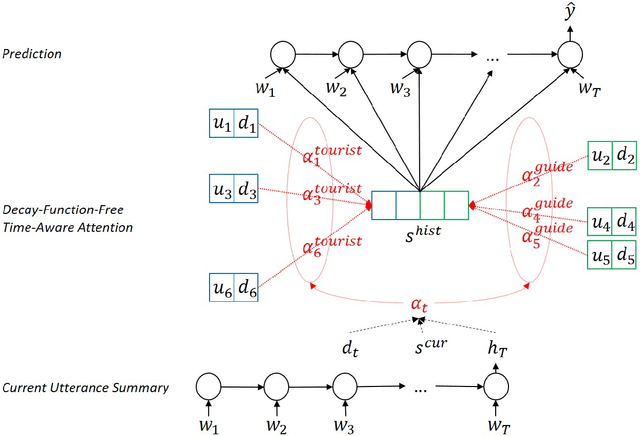
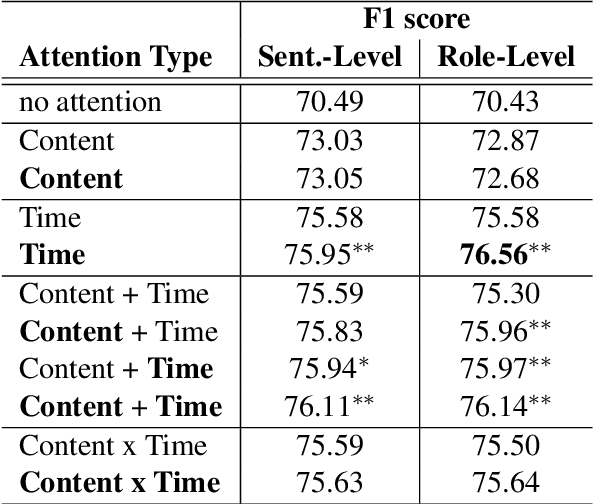
Abstract:To capture salient contextual information for spoken language understanding (SLU) of a dialogue, we propose time-aware models that automatically learn the latent time-decay function of the history without a manual time-decay function. We also propose a method to identify and label the current speaker to improve the SLU accuracy. In experiments on the benchmark dataset used in Dialog State Tracking Challenge 4, the proposed models achieved significantly higher F1 scores than the state-of-the-art contextual models. Finally, we analyze the effectiveness of the introduced models in detail. The analysis demonstrates that the proposed methods were effective to improve SLU accuracy individually.
Self-Attention-Based Message-Relevant Response Generation for Neural Conversation Model
May 23, 2018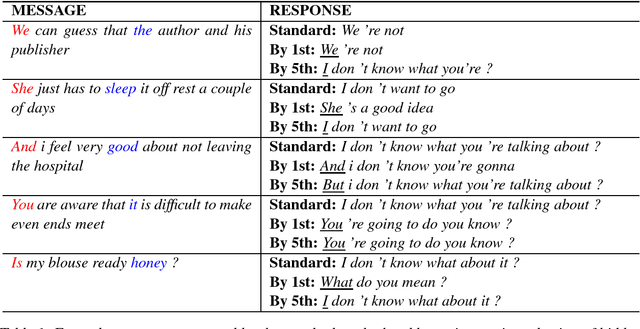
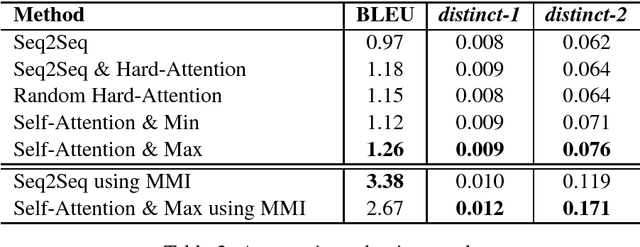
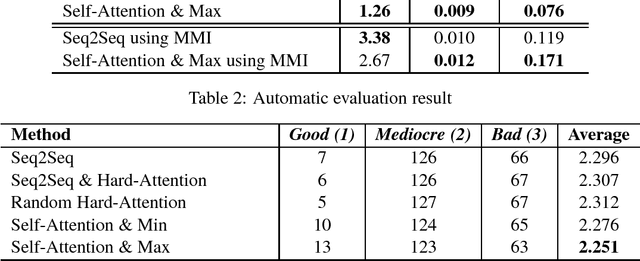
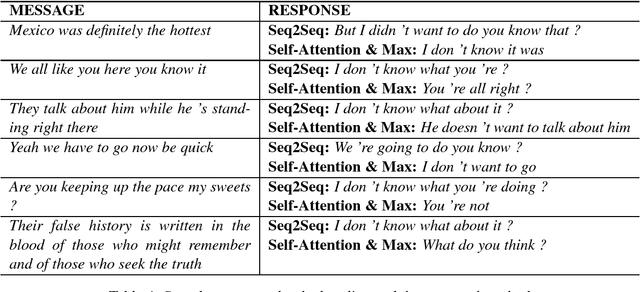
Abstract:Using a sequence-to-sequence framework, many neural conversation models for chit-chat succeed in naturalness of the response. Nevertheless, the neural conversation models tend to give generic responses which are not specific to given messages, and it still remains as a challenge. To alleviate the tendency, we propose a method to promote message-relevant and diverse responses for neural conversation model by using self-attention, which is time-efficient as well as effective. Furthermore, we present an investigation of why and how effective self-attention is in deep comparison with the standard dialogue generation. The experiment results show that the proposed method improves the standard dialogue generation in various evaluation metrics.
Multiple Range-Restricted Bidirectional Gated Recurrent Units with Attention for Relation Classification
Nov 01, 2017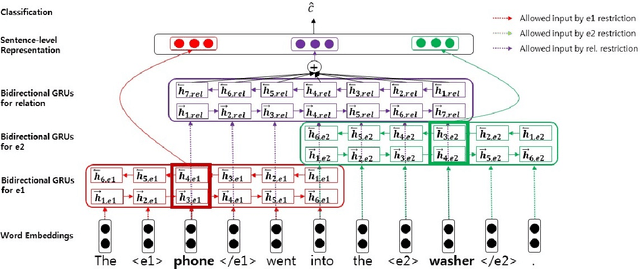
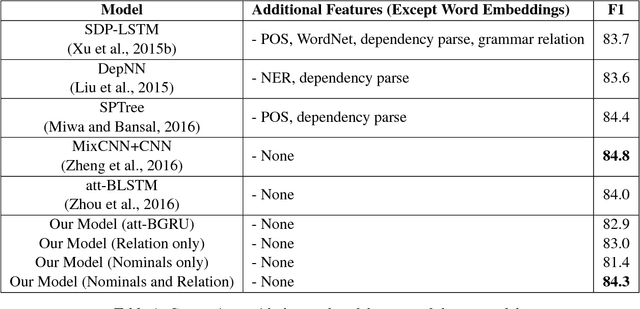
Abstract:Most of neural approaches to relation classification have focused on finding short patterns that represent the semantic relation using Convolutional Neural Networks (CNNs) and those approaches have generally achieved better performances than using Recurrent Neural Networks (RNNs). In a similar intuition to the CNN models, we propose a novel RNN-based model that strongly focuses on only important parts of a sentence using multiple range-restricted bidirectional layers and attention for relation classification. Experimental results on the SemEval-2010 relation classification task show that our model is comparable to the state-of-the-art CNN-based and RNN-based models that use additional linguistic information.
 Add to Chrome
Add to Chrome Add to Firefox
Add to Firefox Add to Edge
Add to Edge